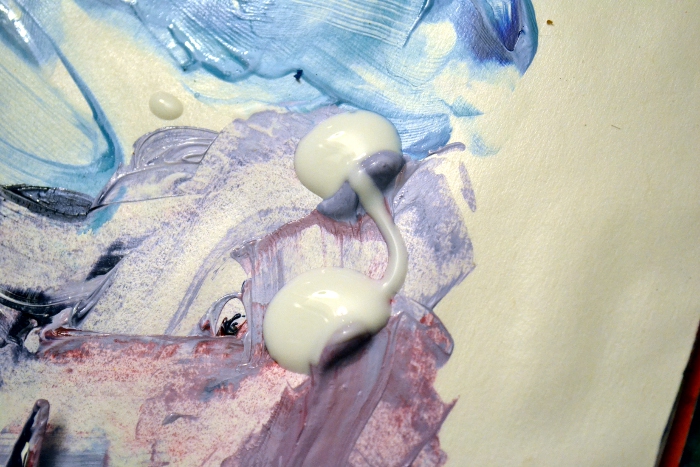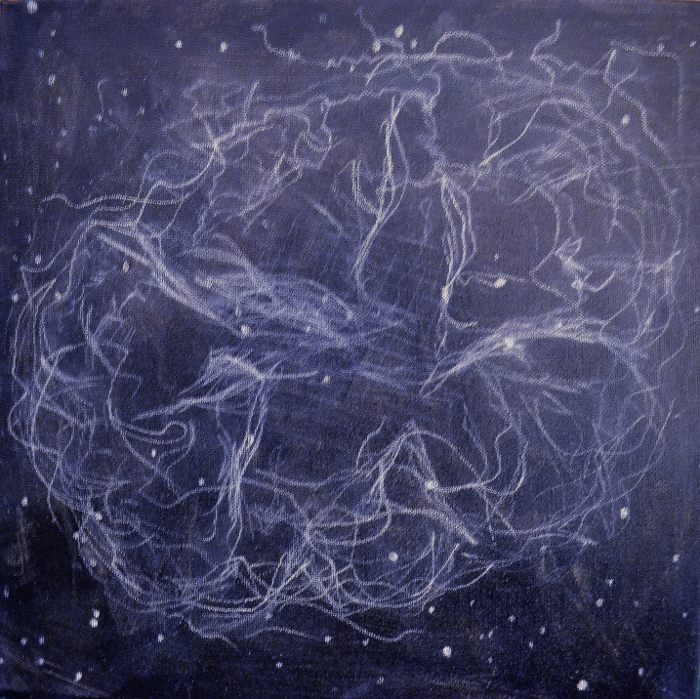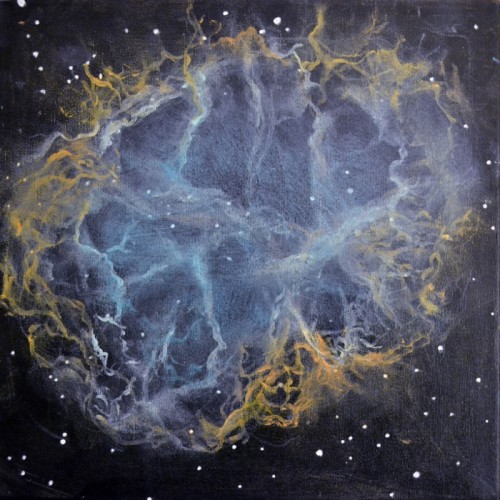About Alizey Khan
My name is Alizey Khan; I am a professional astronomical and abstract painter and printmaker. I was born and raised in the United Kingdom, moved to Pakistan for a few years in middle school, and have lived in America since 2005. I am now based out of Charleston, South Carolina, where I received a degree in Studio Art from the College of Charleston.
The properties of light and spatial depth are the focus of my work, using thinly layered colours to convey a sense of spatial vastness. To this end, I paint astronomical phenomena, which allow for the greatest exploration of light in an incomprehensibly immense space. I strive to visually depict natural processes beyond ordinary human experience to instil in the viewer a sense of curiosity and wonder regarding the universe around us.
I have been interested in astronomy and the wonders of the universe since I was a child. The mysteries of outer space inspire me as an artist because I feel that we as humans get so stupidly caught up in what goes on in our little societies that we forget that we’re just anthills in the scope of the universe. I paint my little galaxies and nebulae and stars to remind myself that there is so much out there we don’t know and haven’t experienced, and we never will unless we collectively start prioritizing the pursuit of knowledge over fighting for resources.
I am a member of the International Association of Astronomical Artists (IAAA).
Alizey Elsewhere on the Web:
Alizey’s DeviantART Print Store
Crab Nebula Acrylic Painting Demo
(Click images below for larger views)
I recently painted the Crab Nebula using acrylics on canvas! The painting is 12″x12″. I took WIP photographs along the way to make a tutorial on how to paint nebulae for you guys.
 |  |
I used Golden acrylic paints to create this; the most important part of my palette is the Golden Acrylic Glazing Medium shown in the photo on the left. You can see the ratio of medium to paint I use in the photo on the right: about 3:1. This creates a really thin layer that builds up delicately without becoming streaky, like acrylic paint mixed with a lot of water is prone to do. You can use any colours you want, but I prefer to use the full rainbow spectrum in my work. I like to use metallics and “interference” iridescent colours as top level glazes to increase depth in my work; the shininess of the metallic paint makes areas where I use it stand out even more against the matte dark background.
I start with a canvas ground painted a solid carbon black with acrylics; you can use black gesso if you prefer.
I like to use a full spectrum of colours. However, here are some of my favourites, that I definitely remember using in this painting. I use Golden brand acrylic paints.
Yellows: Cadmium Yellow / Hansa Yellow / Naples Yellow
Blues: Phthalocyanine blue / Cerulean blue / Phtalocyanine turquoise / Primary Cyan
Reds: Cadmium red medium / Alizarin crimson / Pyrrole orange (transparent)
Other: Interference violet / Permanent violet / Permanent green / Iridescent gold / Metallic blue / Titanium White
Using a white charcoal pencil, I sketched in the basic shape of the Crab Nebula and the major stars around it. Using unmixed white paint and a tiny 00 brush, I painted in the stars.
 |  |
Then, I started to build up some of the light areas in yellow and orange, corresponding to the Hubble image I used as a reference:
You can still see the white charcoal I used as a guideline to the right of both of these WIP shots.
 |  |
I used this acrylic glazing painting technique to paint the wisps of nebulae:
 |  |
Following the ratio of 3 parts glazing medium to 1 part pigment, start with a thin streak of acrylic paint thinned with glazing medium. Using a brush, your fingers, or a wet rag (your preference; I prefer my fingers or a rag since they allow for more control), pull the paint on one side of the streak down and to one side of the streak. The top part of the streak should be intact- you want one side to be hard, and the other side to be fuzzy, in order to create the illusion of a dense point of gas. Let this dry, then go over the area with another colour in another colour to build depth. (To create a large glazed area, paint a blob in the center of the area you want the glaze to be thickest and smooth the paint outward and away from this area with your fingers, a rag or a brush.)
 |  |
At this point, I began to build thin glazes of light blue over the central area of the nebula, building up the lightest areas in the process so they didn’t get lost in the fog I was building:
 |  |
My main concern here was building depth within the cloud of gas; this required plenty of detailed solid areas underneath successive layers of glazes, and variations in color and tone so some areas of the painting receded and others came forward.
Blue and purple areas tend to recede, while red, orange and yellow areas come forward to the eye. I continued to paint in lots of detail, cloak it in a thin glaze of blue paint, and repeat the process. As I added more layers, I began to add iridescent blue pigment glaze to the paint.
 |  |
(Some of the colours are off because the light changed as I was painting, sorry!)
I did not find some of my previous details accurate enough, so I used the glazing and building process to amend them. I also began to build greyish shadows and vibrant blue-green highlights back into the light central area to give it more depth.
 |  |
Finally, I added more highlight details in green and pale magenta for the receding highlighted areas. I finally glazed over the areas I had just painted with an extra thin layer of metallic blue paint. Using metallic paint on the very top layers of the nebula makes it stand out and catch the most light.
 |  |
Thank you for viewing this tutorial! If you like this painting or space art, prints are available here at my Zazzle store.
Original art commissions are always available through my Etsy store, ArtbyAlizey!


What a lovely painting! Thank you for sharing your process with us all. I love painting with acrylics and find that very thin layers is definitely the way to go when working to achieve depth. I’m off to check out your Zazzle store now. 🙂
Sweet work.
Your artwork is beautiful! Thank you for sharing your technique. I tried it and it has inspired me tremendously.
Thank u for such a great, detailed instruction. Will try it in the future?
The third to the last picture looks more like the Crab Nebula. Good job though!
Awesome artwork, I will definitely try this- one thing that I’ve noticed is that if you want to add more stars, mixing white paint with a bit of water makes it much easier to flick. It can be a little messy, but it works well for me
Thanks for the feedback and advice Emma!
Love Love LOVE this! You inspire me! My degree is design, not fine art,..so I’m trying to teach myself through tutorials. Having a blast – I’ve been painting planets, and galaxy looking things and nebulas with watercolor as I teach my kids astronomy through art. I am now encouraged to pull out my acrylics. Thank you for posting the step by step! So awesome to see someone else who loves astronomy and art both!